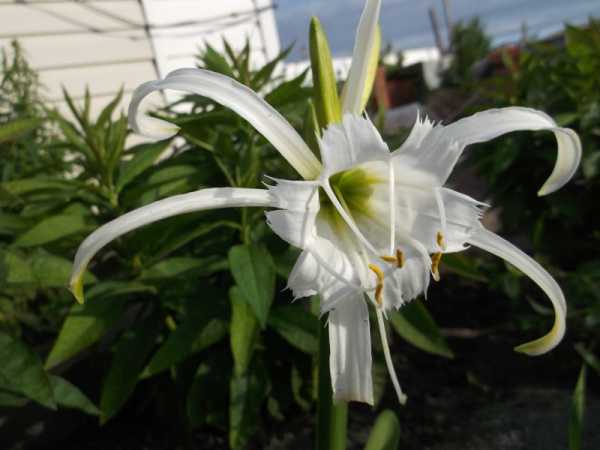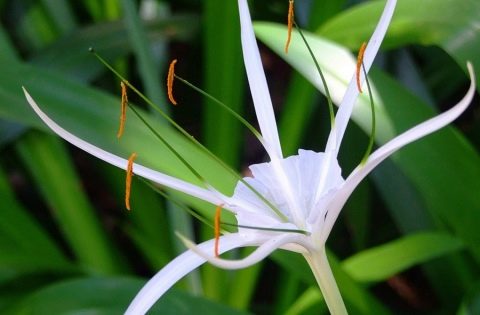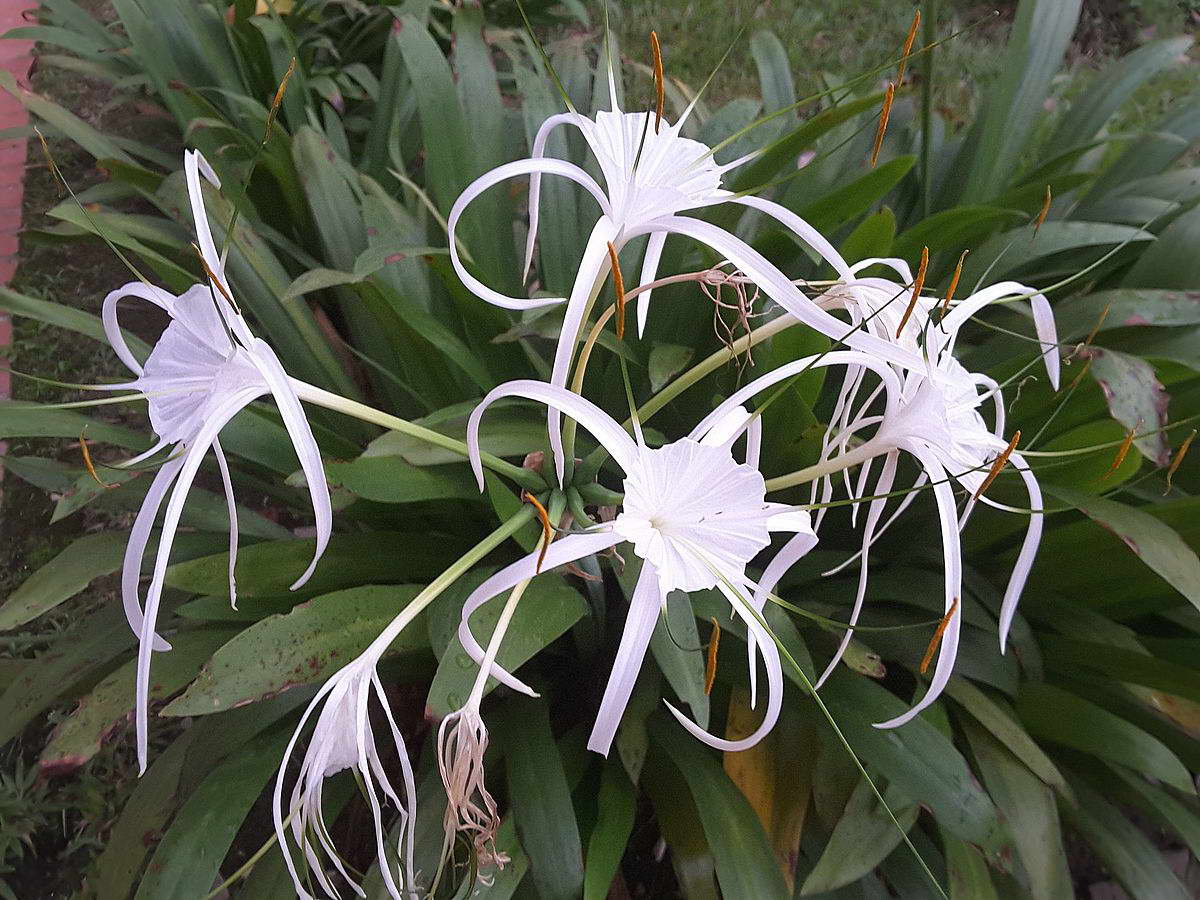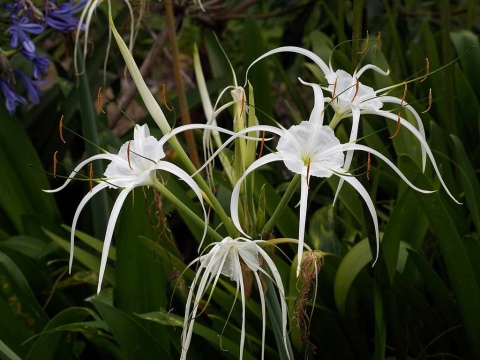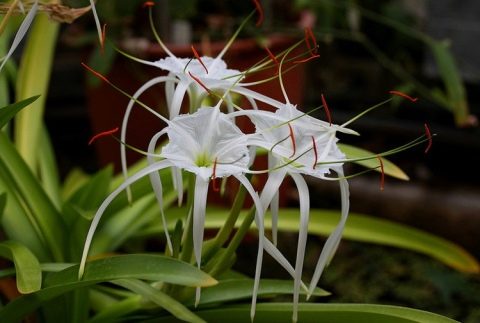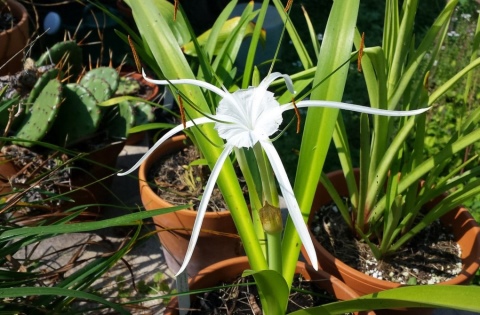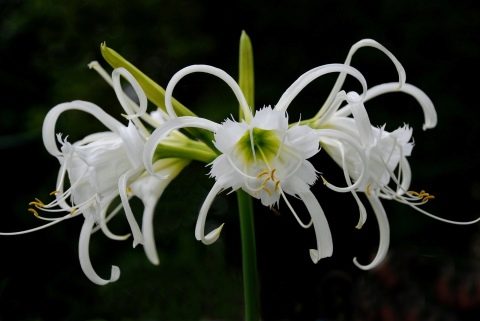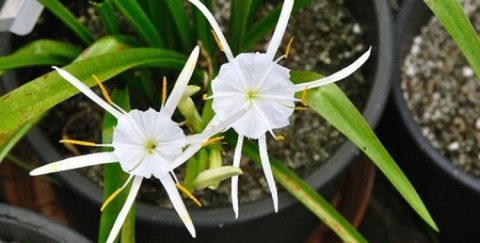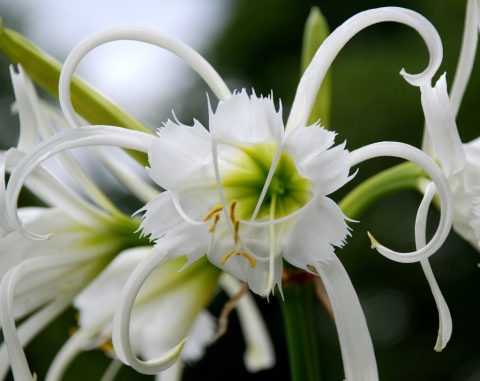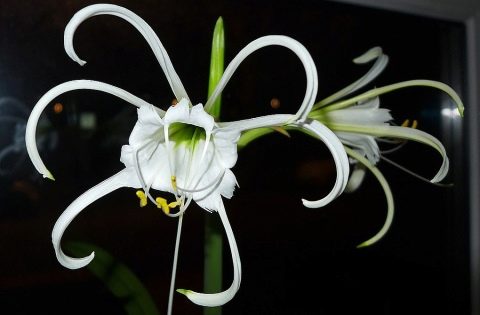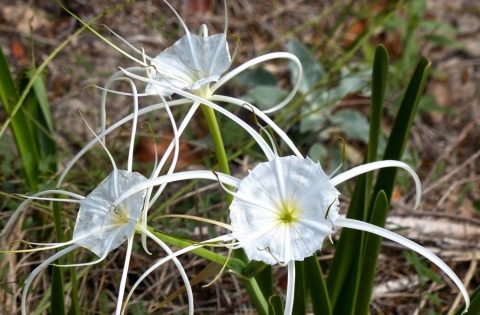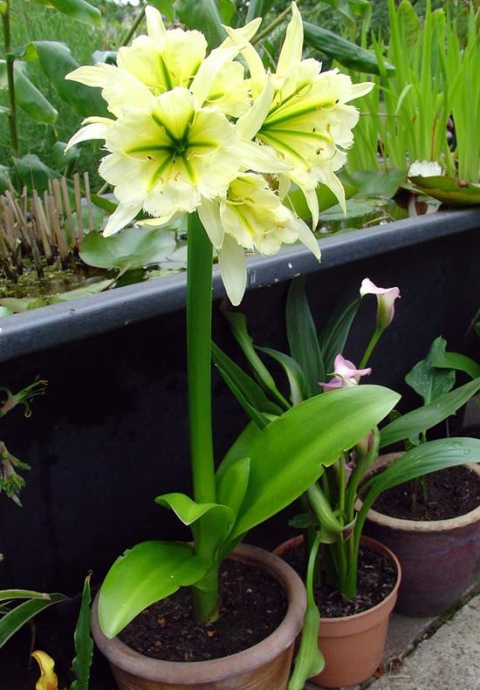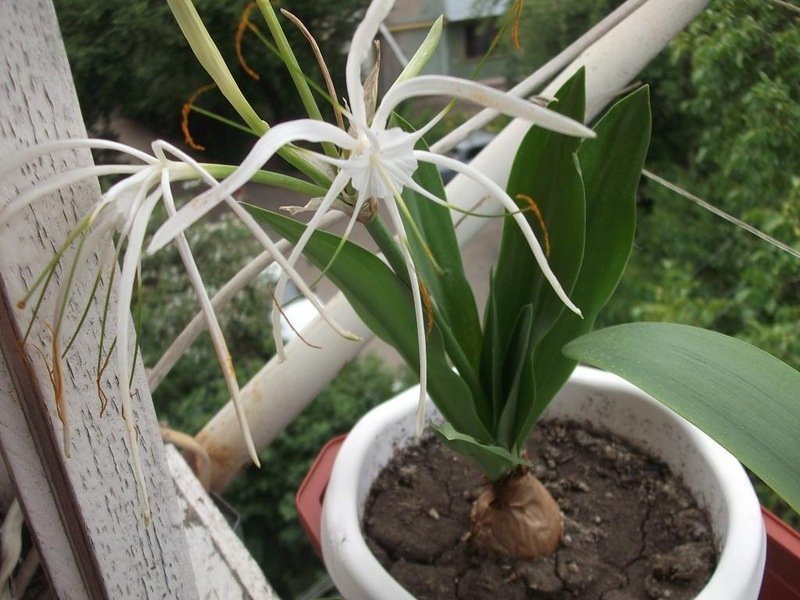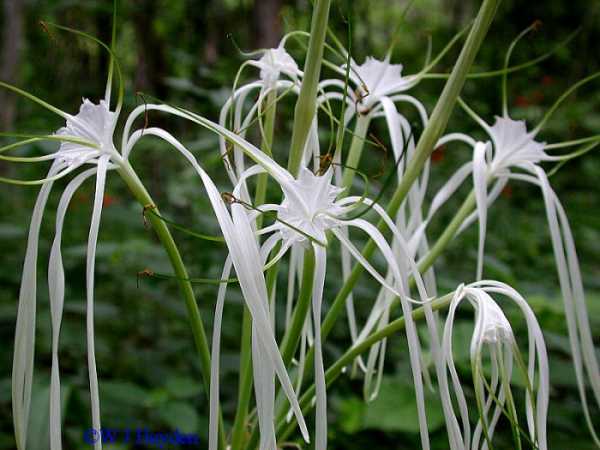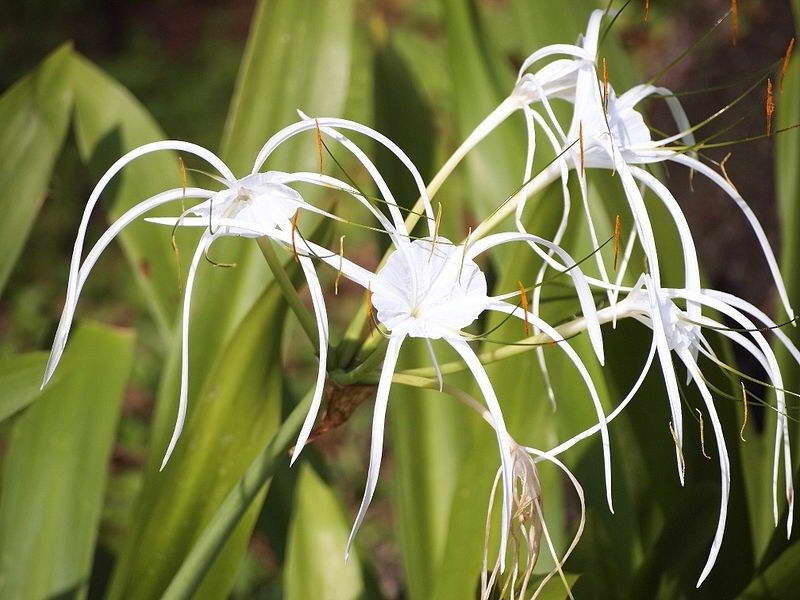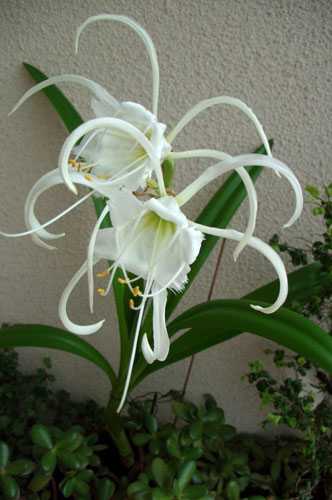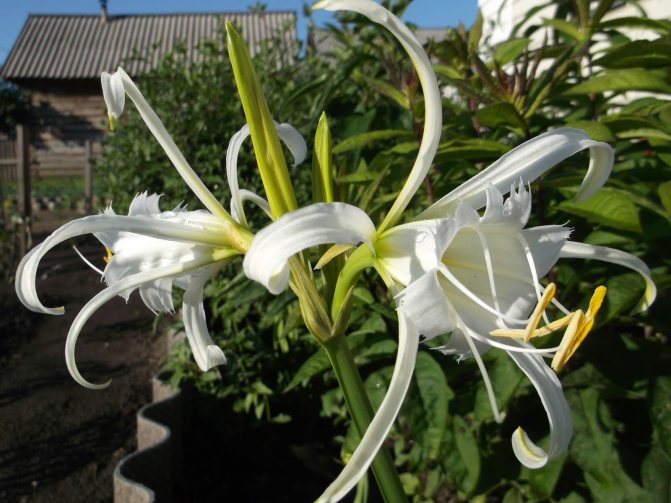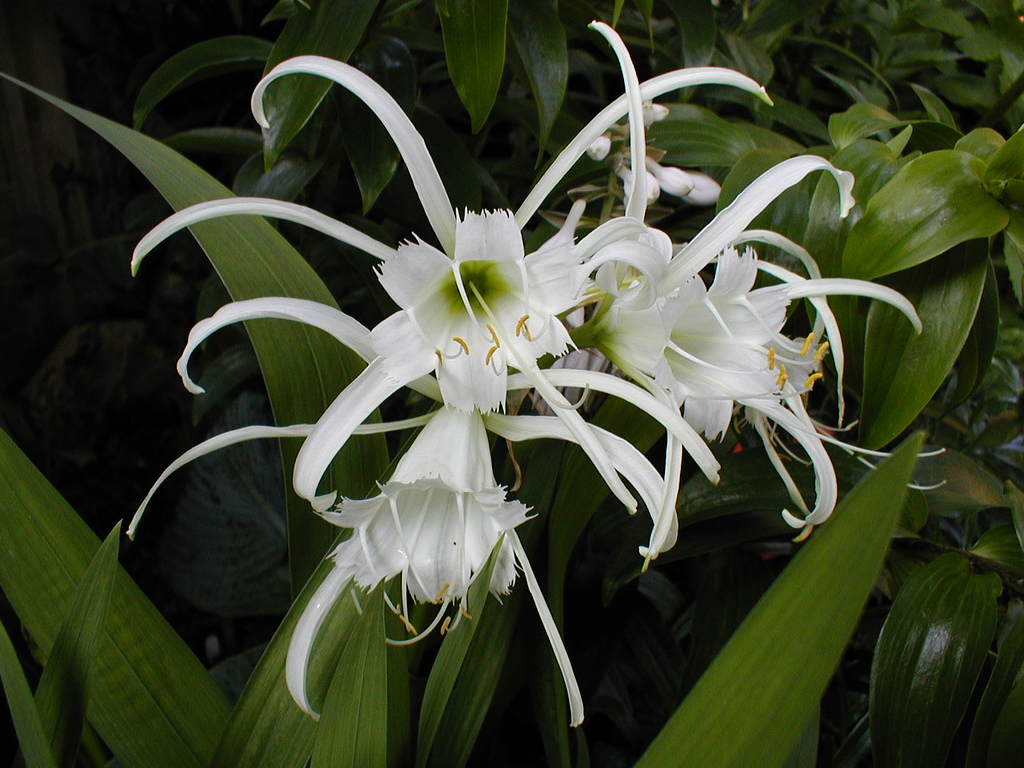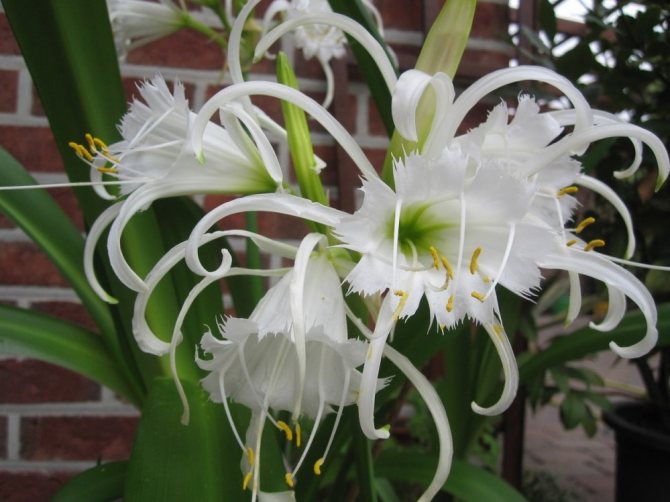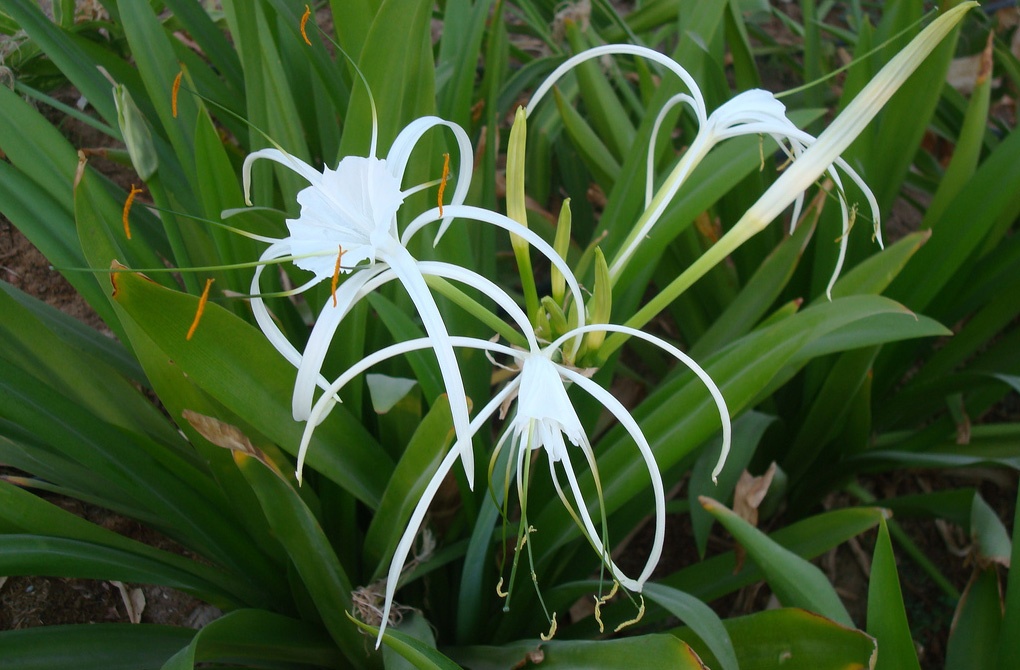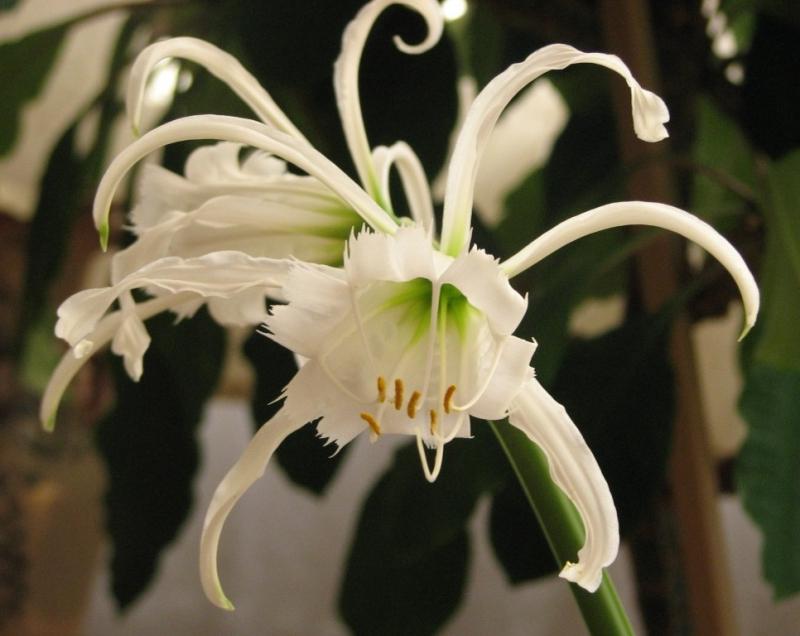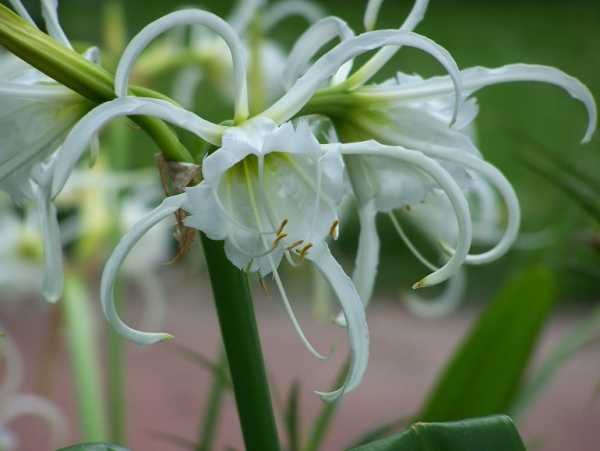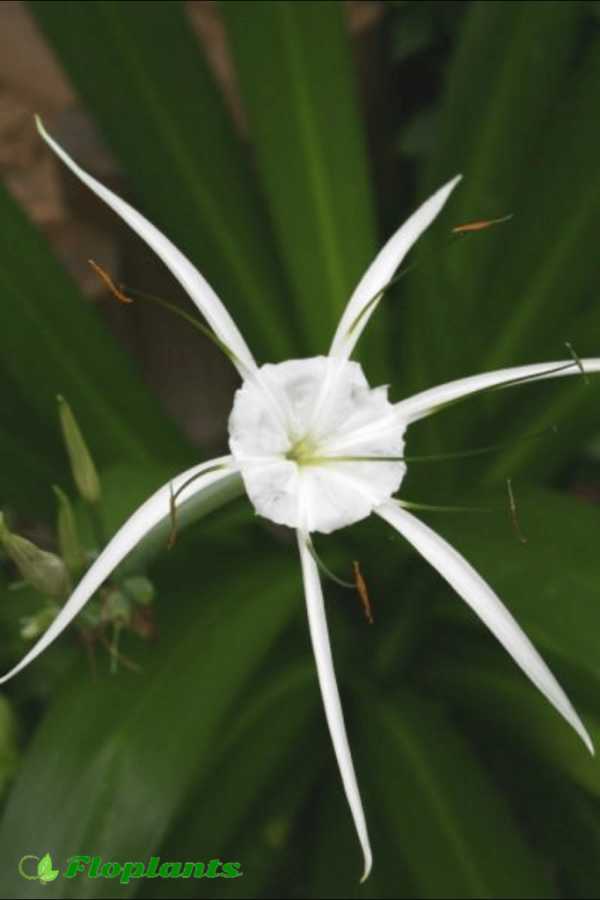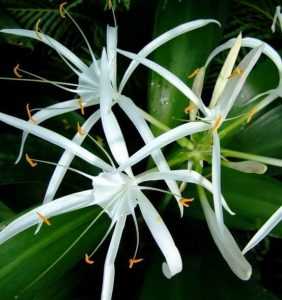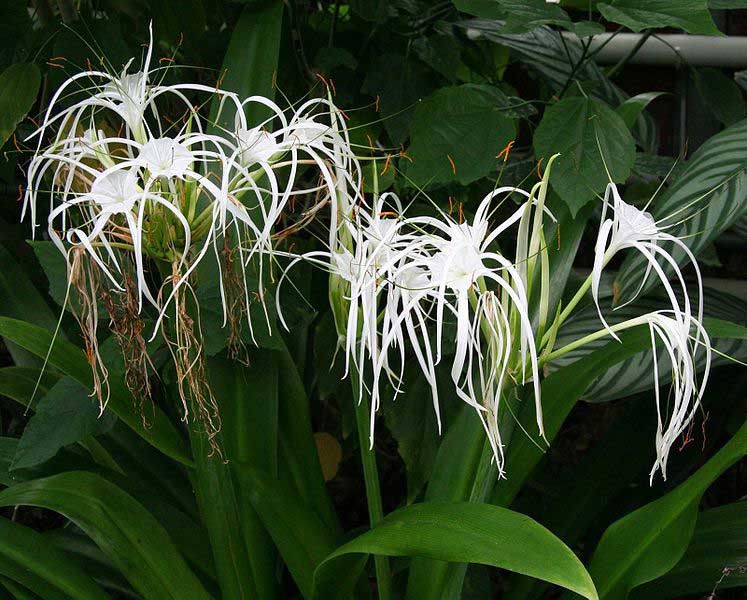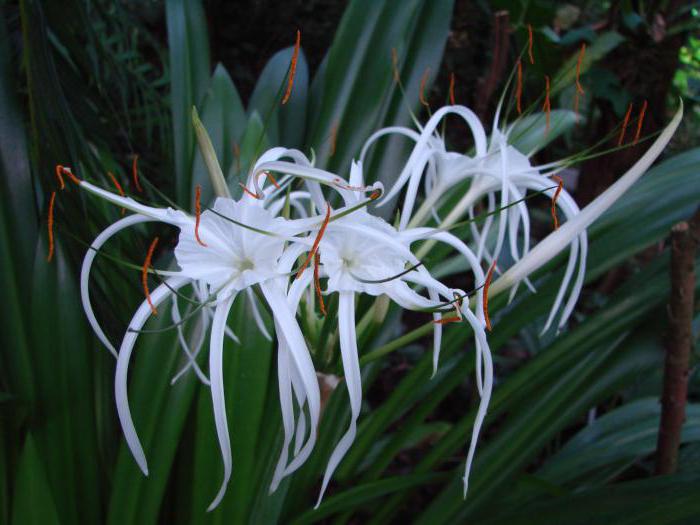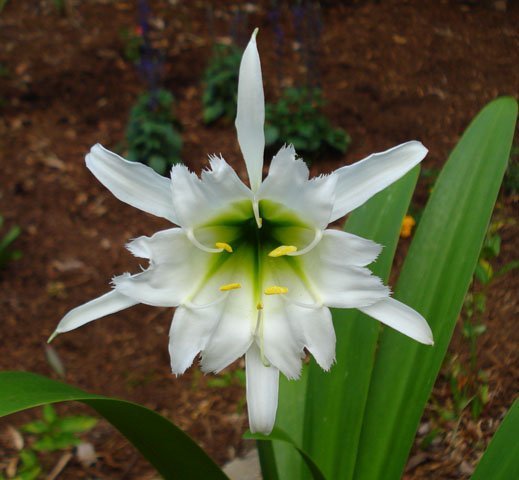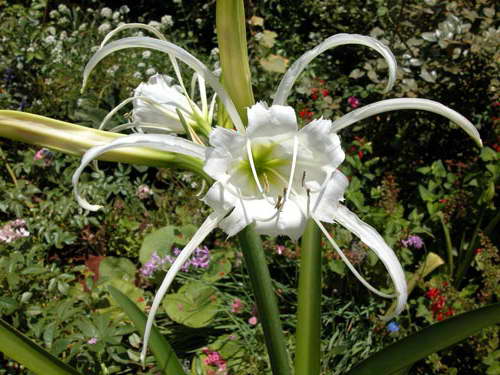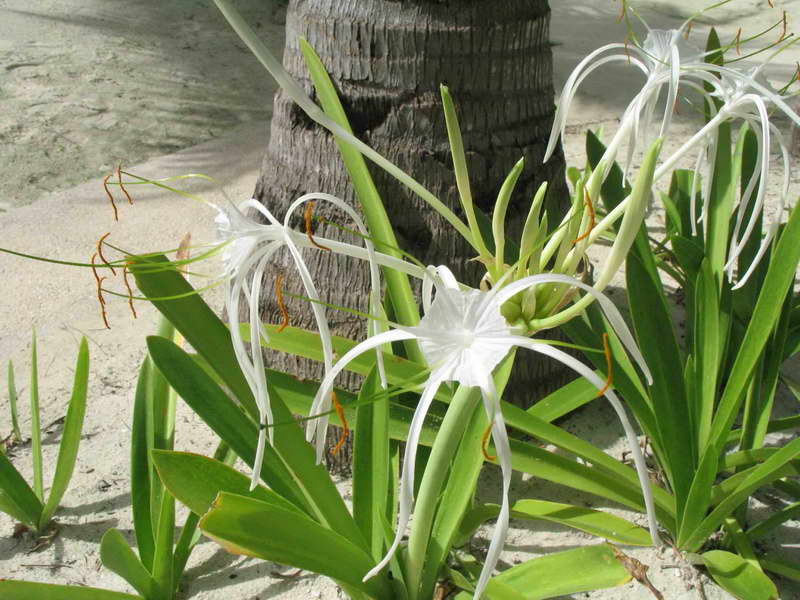What are the problems with growing hymenokallis?
Growing hymenokallis is not an easy process, it can be difficult for a beginner grower to comply with all the conditions for growing a plant, therefore, for the most popular questions, we have prepared a list of symptoms or wrong actions:
Plant / Bulb is missing
- Excessive, irregular watering. As a result, the plant rots and disappears. The first sign is yellowing of the leaves.
- Watering according to the recommendations, but carried out directly on the bulb. The neck of the plant is wet all the time, it gets wet and disappears.
- Inattention of the owner, neglect of diseases.
- Wrong landing site.
Why does hymenokallis not bloom
- With flowering, the opposite is true, if the plant does not have enough moisture, it does not bloom.
- If the location is not sunny.
- At home, the rest period was not sustained.
- Non-compliance with temperature conditions.
The hymenokallis plant is quite capricious when grown, but if you achieve stable growth and abundant flowering, then the delicate scent of this daylily will be remembered forever.
Landing
Unlike other plants, exotic lilies cannot be planted with the bulb completely buried in the ground. It usually goes deep in half, while the top remains open. This is necessary to prevent rotting of the bulb itself. The lily should not be poured with water, as this causes the bulb to rot.
When planting a plant in open ground, the bulb must be germinated. Any container with existing drainage holes is suitable for this. Having placed peat and sawdust in it, the bulb is planted, providing it with comfortable conditions for germination. For example, you can put the container in a cool place where the temperature does not exceed +15 degrees.
To avoid drying out the soil, the container can be placed in a plastic bag, remembering to remove the material to ventilate the plant. Sprouts will not appear if the temperature is less than 10 degrees. You can plant a sprouted bulb in open ground in May, without waiting for the formation of leaves.
Growing hymenokallis, caring for him
The hymenocallis festalis flower can be grown both outdoors and in pots at home. It propagates using seeds or bulbs. An important prerequisite for successful plant growth is maintaining sufficient soil moisture and lighting.
Open ground planting technology
For planting in open ground, germinated hymenokallis bulbs are used. The best period for landing in open ground is the beginning of May, when the weather is stable - more than 150C.
Bulbs are planted in the soil well warmed by the sun, in the sunniest area. It is imperative to control soil moisture. Too much moisture will lead to decay of the roots, its lack will delay flowering.
Advice! It is best to water it in the grooves dug next to the flowers.
Planting at home in pots
To grow hymenokallis (physalis) in a room, you should take into account a number of factors necessary for growing and flowering a plant:
- At the end of autumn, it is necessary to reduce watering and prepare the flower for a dormant period, which is usually 3 months.
- After the plant has shed its foliage, it is taken out into a dark room with a temperature of no higher than 120C, while watering is completely stopped until the beginning of spring.
- A week before the end of February, hymenokallis is brought back into the heat, for lighting, and watering is resumed in small volumes, gradually bringing it to normal. A month later, the plant will release young leaves.
Seeds and bulbs are often used to plant hymenocallis in pots.
How to grow hymenokallis from bulbs
The easiest way to grow hymenokallis is from bulbs. When the plant reaches the age of three, small onion babies with shoots appear on its bulb. For planting, they must be separated, for this they dig up the flower, carefully remove the small bulbs and immediately plant them in the prepared soil.
Attention! The key to successful cultivation is bright lighting and timely watering.
Growing from seeds
After flowering on the hymenokallis, capsules containing seeds are formed. You should first prepare a sandy-peat substrate, into which seeds are planted to a depth of no more than 8 cm. It is necessary to maintain a temperature of at least 200C, regularly water it, then after 3 months the first sprouts of the plant may appear.
How to speed up the flowering of hymenokallis
One of the most frequent questions of amateur flower growers is why hymenokallis does not bloom. Description of several reasons why hymenokallis will not please with its flowers:
- lack of lighting;
- low room temperature;
- lack of a rest period;
- lack of fertilizers and dressings.
Performing regular simple actions, you will be able to enjoy the beautiful and unusual flowering of this plant.
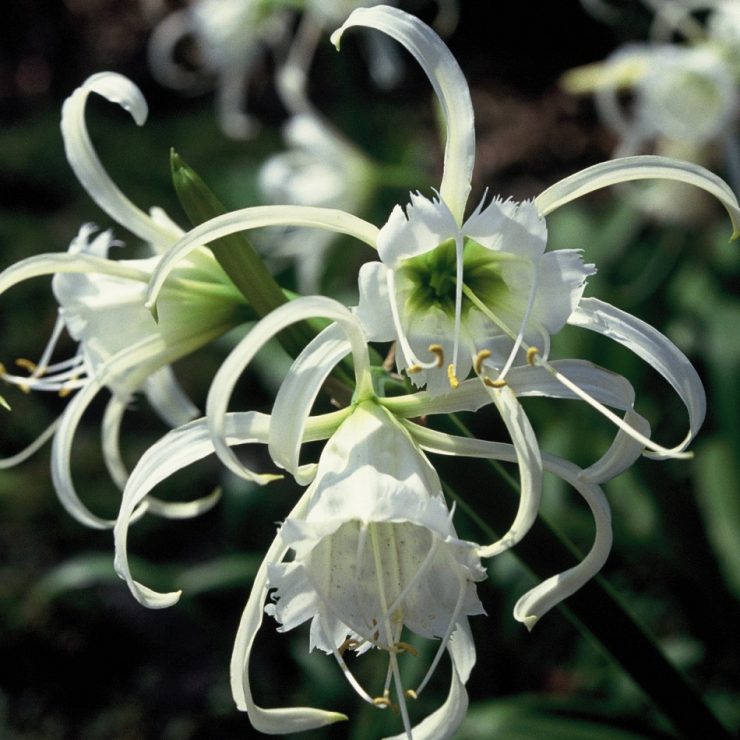
Flowering hymenokallis
Care
Like any plant, hymenokallis needs attention and basic care. Under comfortable conditions, it pleases with the beauty of flowers and freshness of greenery, as well as a pleasant aroma. Caring for him will consist in timely watering, adherence to the temperature regime, humidity level and illumination rules, as well as the planned application of fertilizing, visual examination and prevention of diseases.
Watering
It is necessary to water the plant regularly and correctly. In no case should you wait for the earth to dry out. The plant needs the soil in the pot to be moist all the time, but not overflowed. At the same time, the abundance of watering depends on the period of flower development. For example, he needs more water during active growth.
It is necessary to reduce watering after the plant has faded. From about mid-October, hydration becomes more metered and not so abundant. During the rest period, watering is minimized. Sometimes the flower is not watered at all at this time.
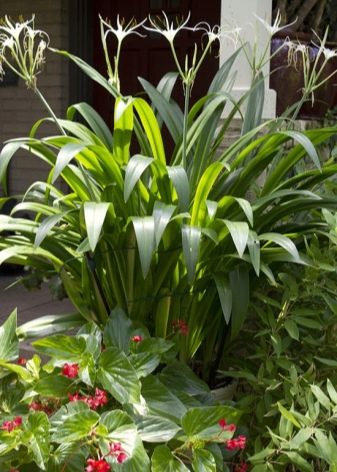
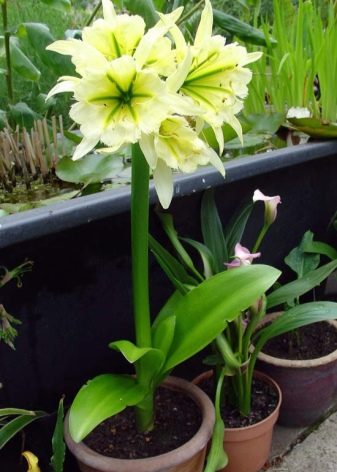
Lighting and temperature control
Speaking about the fact that the plant is not afraid of light, it should be noted: indoor varieties are still not as strong as those that grow on the street. In the heat, you need to remove the flower from the windowsill to prevent possible burns. The temperature for a houseplant in summer corresponds to the temperature of the living room
In winter, it is important that it does not drop less than + 14-18 degrees
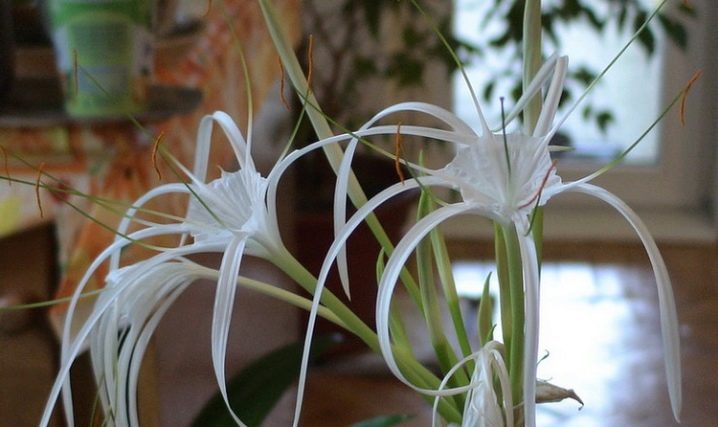
Humidity
Hymenokallis does not tolerate dry air. If the room is too hot, it will lead to accelerated evaporation of moisture from the soil. You can put a container of water next to the pot, spray the leaves or purchase a special air humidifier
During active flowering, you need to carefully compensate for the lack of moisture
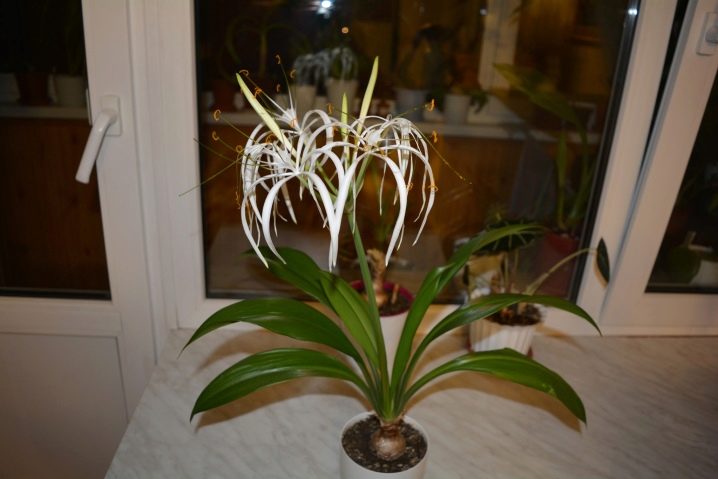
Fertilization
In order for the plant to develop well and please with abundant flowering, it is necessary to provide it with timely feeding. It is allowed to feed with mineral fertilizers no more than 1 time in 2 weeks. This will contribute to an increase in the growing season, as well as the splendor of the flowers themselves. You can not fertilize with nitrogenous fertilizing, as this inhibits the formation of flowers.
The nutrient solution is prepared in strict accordance with the proportions indicated on the product packaging. Fertilizer must be applied to a moist substrate. When the plant is resting, do not oversaturate the soil with nutrients.
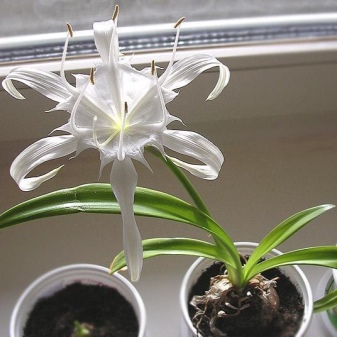
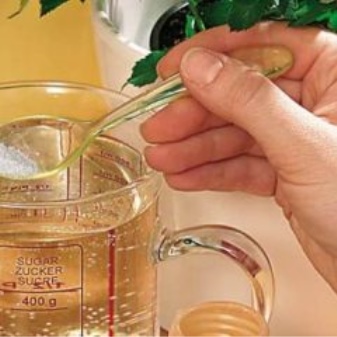
Diseases and pests: how to cure and prevent?
Hymenokallis does not have any specific diseases and pests that affect it exclusively.Among the most serious problems that flower growers may face are stagonosporosis (the scourge of all Amaryllis) and anthracnose, which develops due to the regular waterlogging of the soil in the pot. The poisonous sap protects the plant from many pests, but even this does not stop some sucking insects.
Table: diseases and pests affecting the plant
| Diseases and pests | Signs | Reason for appearance | Treatment and prevention measures |
| Anthracnose | The tips of the leaves turn brown, and black specks appear on the obverse. | Waterlogging of the substrate. |
|
| Stagonosporosis (red burn) | Reddish streaks on the leaves and depressed spots of the same color on the bulb. | Infection with spores of a fungus from a diseased plant. |
|
| Mealybug | White lumps appear in the leaf axils. Then they dry and deform. | Dry indoor air. |
|
| Shield aphid (scale insect) | Brown bumps appear on the plant, the surrounding tissues turn yellow or red. Then the leaves turn pale, wither and dry completely. | Insufficient humidity in the room. |
|
Home care
|
Genus |
Hymenokallis |
|
Family |
Amaryllidaceae |
|
Homeland |
Central, South America |
|
Escape type |
Does not have |
|
Inflorescence |
Brush |
|
Petal color |
White |
|
The structure and color of the leaves |
Xiphoid, pointed, dark green |
|
Flowering period |
Spring Summer. Some species bloom in winter |
|
Fetus |
Oval, fleshy, green, seeded |
|
Reproduction |
Seeds, daughter bulbs |
A flower with a very exotic appearance cannot be called whimsical and difficult to care for.
It is important to provide it with regular watering and place it in the right place where it will receive enough light. Below is information on how to care for hymenokallis after planting to achieve abundant flowering.
Lighting. A representative of the Amaryllis family has a high need for an abundance of sunlight, and it tolerates exposure to direct rays well. With a lack of light, the plant will not form buds. Species that bloom in winter need additional lighting to provide them with 10 hours of daylight hours.
Air temperature. This crop will grow successfully at moderate air temperatures. In winter, non-flowering varieties should be placed in cooler conditions with a temperature of 14 - 17 degrees.
Watering. Hymenokallis grows in nature near water bodies, which should be taken into account during watering. The soil must be constantly moist, but moisture stagnation must not be allowed, from which the roots of the plant will rot. In winter, watering is carried out less frequently than in the rest of the time. Deciduous species do not need watering at this time of the year.
Air humidity. Hymenokallis does not care about air humidity. To prevent dust from accumulating on the plant, it is periodically washed under a shower with water at room temperature.
The soil. The soil for hymenokallis should be good for water and air, be loose, with a neutral acid reaction and saturated with fertilizers.To make up a soil mixture for a given culture, you need to mix leafy soil with turf, add coarse sand to these components. Take the components in a ratio of 3: 1: 1. You can buy ready-made soil for bulbous plants.
Top dressing. Fertilizers are applied during the period of intensive growth and flowering with a frequency of 1 - 2 times a month. Use a balanced liquid mineral complex for bulbous or flowering indoor crops. It is not recommended to use top dressing with a high nitrogen content, since this element will provoke rapid foliage growth and negatively affect flowering.
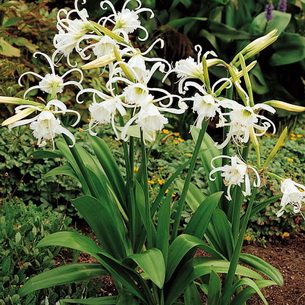
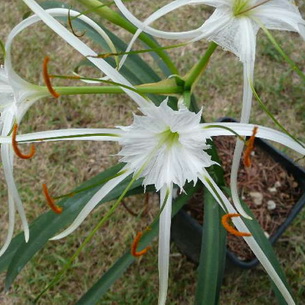
Transfer. Hymenokallis is difficult to tolerate a transplant, so this procedure should be carried out only when it is absolutely necessary. Usually the plant is replanted every 3 to 4 years. For the transplant to be successful, certain rules must be followed. Place the bulb in the substrate at a shallow depth, so that it is half on the soil surface. If you deepen it deeper, it will rot. The pot shouldn't be too big. It should be based on the size of the bulb. The distance from it to the edge of the pot should be 3 cm. This work is carried out in early spring.
Diseases and pests typical for hymenocallis
The main problem of growing hymenokallis for many hobbyists is excessive waterlogging of the soil, which causes not only rotting of the roots, but also the appearance of pests such as spider mites or aphids. At the same time, the foliage begins to turn yellow. To get rid of them, you need to use special means - insecticides.
With a lack of moisture, the plant can be affected by gray rot and red burns. For treatment, it is necessary to cut off the affected parts of the plant and sprinkle them with ash, and also treat them with foundation.
The appearance of brown spots on the foliage is often observed, which means that the disease is affected by anthracnose. In this case, all affected foliage should be cut off and burned. Lack of air also negatively affects the plant. To do this, maintain a sufficient distance between plants both in the garden and on the windowsill.
It is important to water hymenokallis correctly, give it a rest during the rest period, perform a transplant every 2-3 years, and also control the absence of pests and diseases. If you take care of the plant, then it will delight you with its unusual and beautiful flowers.
Common plant problems
Hymenokallis can be overcome by the following troubles.
- The lethargy of the leaves and their yellowing from below are the result of excessive watering of the plant.
- Gray rot - this is due to the regular and excessive moisture of the hymenokallis.
- Lethargy and pallor of the leaves, falling flowers - the plant lacks moisture.
- The hymenokallis plant does not bloom, why? This may indicate a lack of light, an excess of cold, excessive or insufficient watering, old or poor-quality soil, or a violation of the dormant period.
- Burns on leaves and pallor of flowers are due to an excess of sunlight.
- Blackening of flowers is caused by cold or excessive watering.
Description
Hymenokallis is a separate genus among the Amaryllis. According to the habitat, more than 60 species were divided into groups. A beautiful flower can be found in the tropics and subtropics of America, India, Africa on elevations near rivers and lakes, it happens at an altitude of 2500 meters.
The rhizome consists of an ovoid or spherical bulb, and the roots are represented by thin threads. An adult bulb reaches 0.1 meters in diameter. The apex is elongated with a solid isthmus.
It is needed in order to cover the basal leaves that are collected in the outlet. Xiphoid leaf plates, dense, are located in the 1st plane. Their length can be 0.5 - 1 meter.
The color is quite fluctuating - bright green or greenish gray.In the middle of spring, green shoots begin to grow, and they will wither at the end of summer, but it happens that the variety is evergreen.
The flowers have a unique decorative shape. The core of the open umbrella type is located directly on the longish tube, and its narrow petals are decorated with it. Such bent on the outside of the petals can be about six with a length of 0.2 meters.
Six fused petals are part of the central corolla; their edges can be smooth or serrated. The diameter of the funnel with adherent stamens reaches 50 millimeters.

Large oval-shaped anthers of yellow or orange color are located at the ends of the stamens. Flowers make up large paniculate or umbellate inflorescences, the number of which can reach 2-16.
The peduncle is quite thick and emerges from the center of the rosette of leaves. Usually its height is about 0.5 meters. Oval, fleshy seeds form when flowering ends.
In ancient times, the milky juice of a spider lily was used as a medicine, but in fact it is poisonous. Children and animals need to restrict access to hymenokallis.
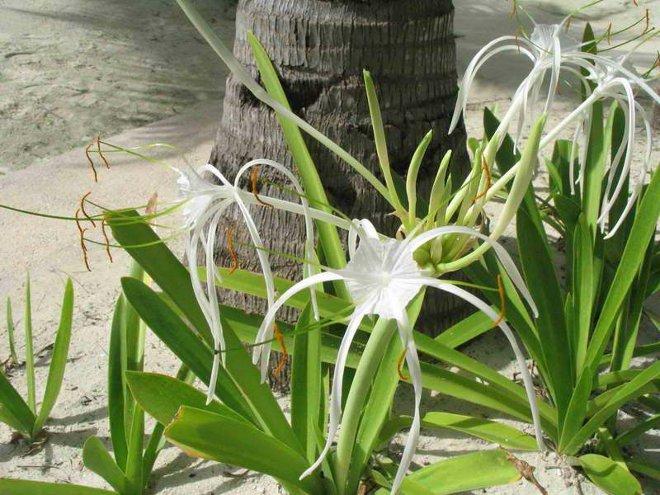
Views
- The pleasant (beautiful) hymenokallis is an evergreen plant that reaches 0.35-0.45 meters in height and lives in the Caribbean subtropical dry forests. The pear-shaped bulb reaches 75-100 millimeters in diameter. Hymenokallis forms seven to eight leaf blades during the 1st season. Oval, petiolate or lanceolate foliage. The size of the leaves is 0.25-0.4 meters, and the width is 0.08-0.13 meters. The height of the grayish-green peduncle is 0.3-0.4 meters, 7-12 flowers grow on it, fixed on short pedicels. A white flower in the form of an open umbrella with long petals. The length of the central tube is 70-90 millimeters, while the thin petals are 90-110 millimeters long. Flowers have a pronounced lily aroma.
- Caribbean hymenokallis is a perennial evergreen with an indistinct neck on bulbs, inhabiting the Caribbean with Jamaica. Lanceolate leaves are 0.3-0.6 meters long with a width of 50-70 millimeters. The leaves have pointed ends with a rounded top. The foliage sits well on the stem base. The wide and fleshy peduncle is approximately 0.6 meters long. Inflorescences are in the shape of a panicle. They include eight to ten buds. Throughout the winter period, flowering occurs annually.
- Broadleaf hymenokallis is a herbaceous species. It is tall and has elongated, slightly oblong leaves. This type of hymenokallis can be found in Jamaica and Cuba. There is a concave vein in the center of the leaf. The length of the leaf plates reaches 0.45-0.7 meters. And the stem is from 0.6 meters and above. The inflorescences have densely planted flowers, which are located on a long tube (80-120 millimeters). The crown of flowers is presented in the form of a narrowish funnel, its diameter is 3.5 centimeters, the edge is wavy. Long petals protrude from the umbrella at 0.09-0.14 meters.
- The coastal hymenokallis is found in the swampy forests of Brazil, Mexico and Peru. The leaf plates, reaching a length of 0.75 meters, hide the base of the plant. The flower stalk, located in the middle, is heavily covered with large snow-white flowers. The crown has a smooth, fused edge. The narrow petals are only five millimeters wide and 0.12 meters long.
- The variegated variety of coastal hymenokallis is most often used as a houseplant. It has a variegated color of leaves, and the edges with a yellowish or creamy edging.
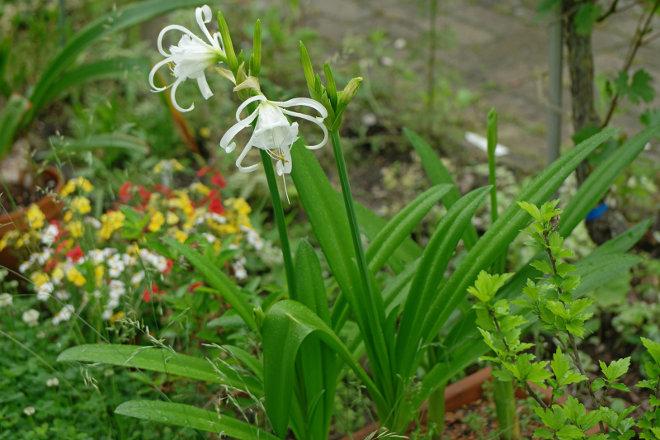
Growing alissum from seeds
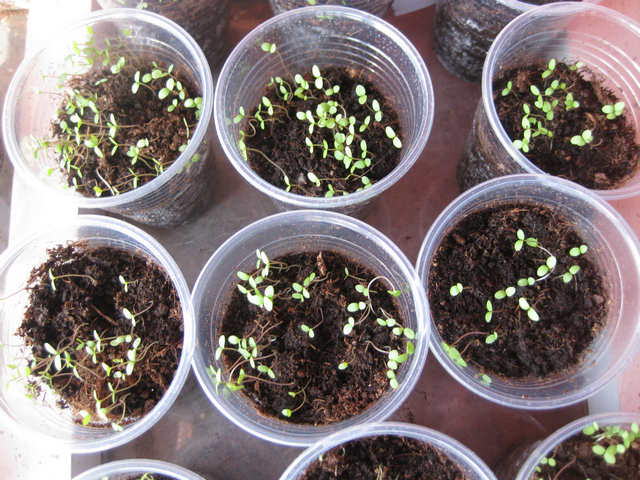
Sowing
It is possible to grow alissum from seeds in a seedless and seedling way. If a seedless cultivation method was chosen, then sowing seeds in open soil should be done in the first days of May. They are buried in the soil only 15 mm. After the seedlings appear as a solid carpet, they will need to be thinned out. If sowing was carried out in spring, then flowering will be belated.Sowing can be done before winter, in the cold season, the seeds will be able to undergo natural stratification, and then in the spring, friendly shoots will appear, while the senses will be relatively strong and their flowering will begin in a timely manner.
Seedling care

However, most gardeners prefer to grow alissum through seedlings, because this method is distinguished by its reliability. Sowing seeds for seedlings is carried out in March or April. The boxes should be filled with a nutritious light substrate, which contains a little lime (pH 5.5-6.2). The seeds are evenly distributed over the surface of the substrate, not very densely, then they are slightly pressed into the surface or sprinkled with a thin layer of the substrate. The containers must be rearranged in a well-lit place, having previously covered them with film or glass. The optimum temperature should be between 10 and 15 degrees. Crops should be moderately moistened and ventilated regularly. If everything is done correctly, then the first seedlings will appear after 7 days or earlier.
Immediately after the seedlings begin to form the first true leaf plate, they should be fed with complex fertilizer. It will be possible to cut the seedlings into individual cups only after the plants have formed 2 or 3 true leaf plates. However, if the seedlings grow very quickly, then you do not need to dive them, when the time comes, they are immediately planted in open soil.
ALISSUM seed growing
Hymenokallis care at home

Hymenokallis at home how to care for flowering photos
Hymenokallis is most often grown in greenhouse conditions, but outdoor cultivation is also acceptable.
Here, attention is paid to simple rules for caring for hymenokallis in an apartment or house.
- When choosing a place for a flower, keep in mind that he is "southerner" and does not want to bloom on the north side. So give it a south, west, or east window with good lighting. He is not afraid of direct sunlight. And in winter, for winter-flowering species, you will have to organize additional illumination so that daylight hours last at least 10 hours.
- The usual temperature in summer and spring, which is kept in apartments, is suitable for hymenokallis. In summer, the flower can "live" on the balcony or in the garden.
- In winter, if you light up the flower, then lowering the temperature is not required, but if it is at rest, then the desired temperature is 14 - 18 ˚ C. This can be achieved by moving the pot closer to the glass and blocking the flow of warm air from the room with film or glass. The transparent film is attached higher to the wrong side of the tulle, lowered to the windowsill and placed under the pot. Thus, air from the battery does not flow to the window. An old aquarium is suitable for creating a "third glass".
Peruvian daffodils grow along river banks in their native tropics, so create similar conditions for the flower during flowering. This is the most delicate issue in hymenokallis care. The soil in the pot should not dry out, but water stagnation should not be allowed, as this will lead to rotting of the bulb.
Use water, as usual, for watering flowers - separated and at room temperature. At the end of flowering, watering is reduced, transferring the plant to rest. Deciduous varieties completely stop watering (end of August), and, after the foliage has completely dried, the leafless bulb is stored without watering at a temperature of no more than 12 ° C. Evergreen hymenokallis are watered moderately, making sure that the foliage does not lose turgor.
This flower does not require an additional increase in humidity, but sometimes you can wash the leaves from dust, protecting the flowers from water ingress.
Soil for hymenokallis
Fertile soil is an important aspect. Here are some examples of suitable potting mixes.
I mixture:
- sod land - 2 parts;
- leaf land - 2 parts;
- humus - 2 parts;
- sand (river coarse) - 1 part;
- peat - 1 part.
II mixture:
- sod land - 1 part;
- leaf land - 3 parts;
- sand (river coarse) - 1 part.
III mixture:
- ready-made substrate for bulbous;
- crushed charcoal (a little, for prevention).
The plant develops a strong root system, so take a pot larger than the bulb by 5-6 cm in diameter (the plant blooms better if the pot is not too spacious), cover the bottom with drainage, then soil mixture and place the bulb itself, without burying it completely (about a third should remain on the surface).
Landing
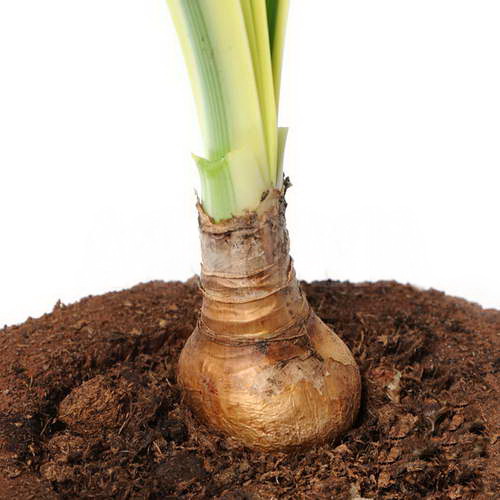
How to plant hymenokallis at home photo
- The hymenokallis bulb is planted shallowly, half its height buried in the ground, and the upper part is above the ground. This is necessary so that the bulb does not rot.
- In order for the plant to bloom, and not to reproduce children and build up green mass, you should not plant the bulb in a large pot. The distance to the edges of the pot from the bulb is no more than 2-3 cm.
- The bulbs are planted in late March-early April, at the end of the dormant period.
How to feed hymenokallis
Top dressing for hymenokallis is produced with fertilizers for bulbous crops or for flowering plants. Study the composition carefully so that it does not contain nitrogenous components. Nitrogen affects the development of green mass and inhibits flowering, and can also cause rotting of the bulb. Fertilize a couple of times a month, following the instructions on the preparation. At the end of flowering, feeding is stopped.
As for the transplant, the hymenocallis do not tolerate it well, so this should be done once every 4 years, at the end of the dormant period (March).
Resting flowers are brought into the light at the end of February and watered in small doses until foliage appears.
How to plant?
Before planting, you need to choose a suitable place in the garden - it should be a shaded area, closed from the wind. All types of kalmiya prefer loose and fertile soil with high acidity. If the soil is heavy, clayey, it must be mixed with a small amount of peat and leafy soil.
It is also important to create a drainage layer if the bed is in a low-lying area. Calmia does not tolerate stagnant water
The best time to plant a bush seedling is spring, around mid-April to early May. The step-by-step process of planting in open ground is as follows:
- it is necessary to dig a hole - its depth should be twice the length of the rhizome;
- if necessary, fill a drainage layer on the bottom, you can use small pebbles, coarse sand or brick chips;
- mineral fertilizer must be applied to the depleted soil;
- place the seedling in the center of the hole and cover it with earth;
- thoroughly tamp the earth and water the plant.
Almost all types of calmia are suitable for growing in the Moscow region, but in the Urals and Siberia it is better to grow exclusively narrow-leaved calcium, as it withstands frost better. In extremely cold regions, the plant may need additional shelter for the winter.

